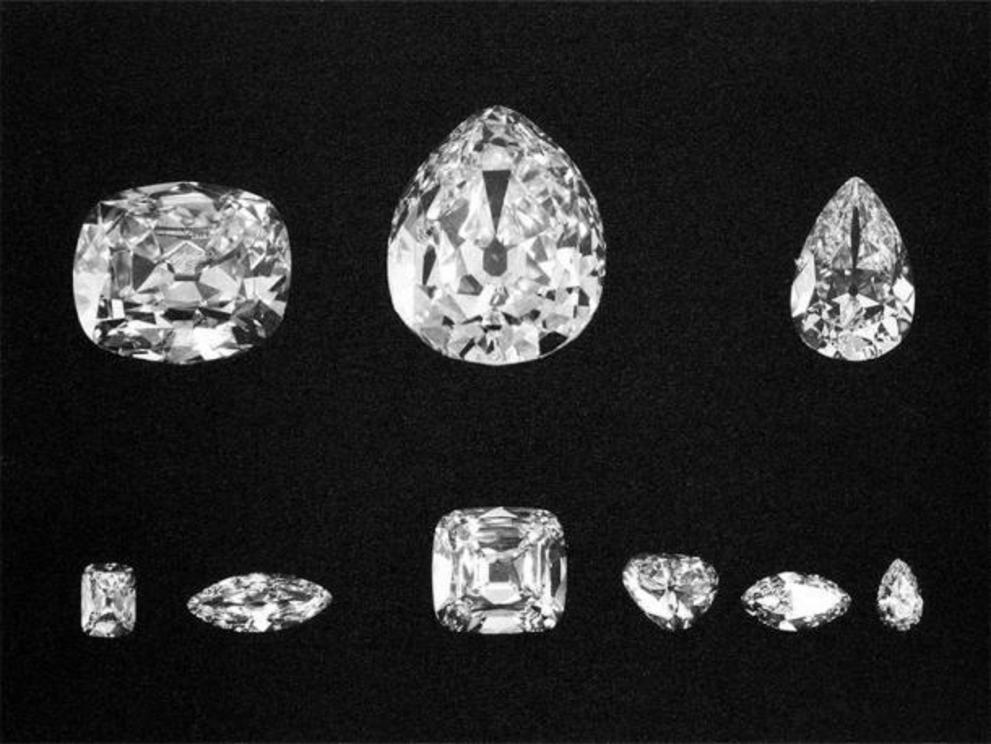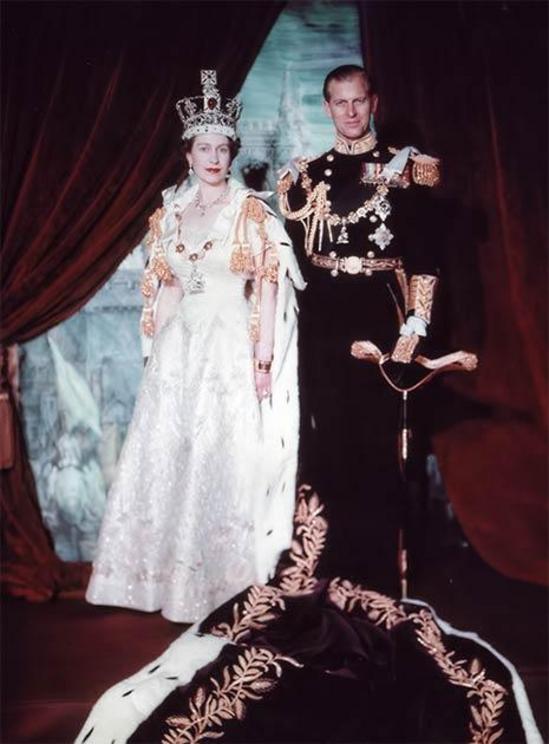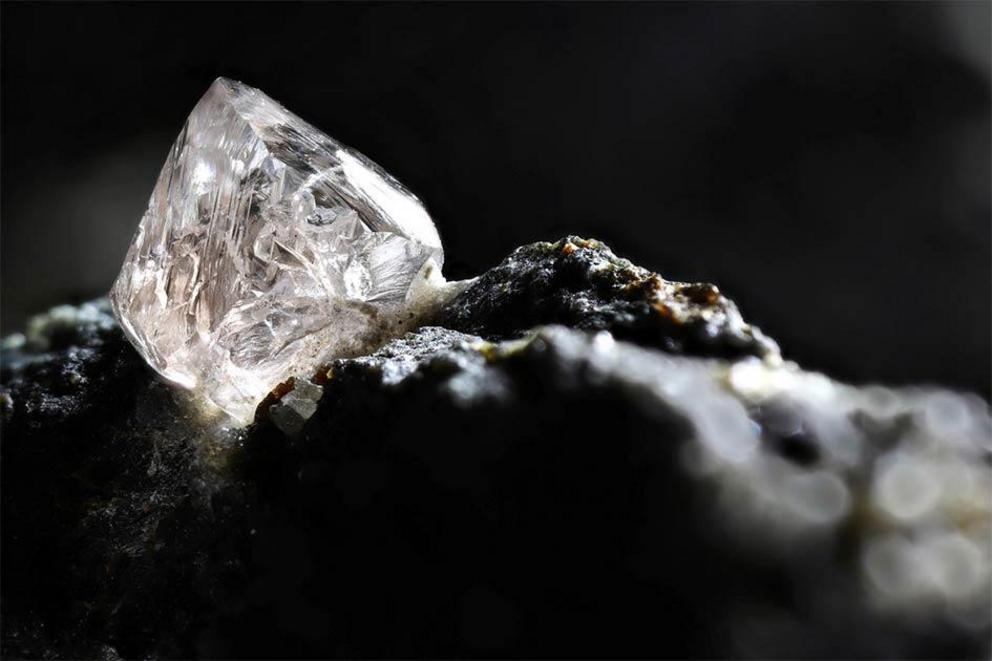Diamond secrets: crown jewels gem formed 400 miles deep
The rarest diamonds formed far below the surface.
Discovered at the Premier No.2 mine in Cullinan, South Africa, on January 26, 1905, the famous “Cullinan diamond” is the largest gem-quality diamond ever found. Weighing an incredible 3,106.75 carats, this monstrous and deeply-ancient stone was eventually cut into smaller stones, the largest of which were set into the crown jewels of Britain. Now a team of US researchers have probed the ancient origins of a series of large gem diamonds, similar to the Cullinan, discovering that they form “super deep” in the earth’s mantle.
Studying the Origins of the Rarest Objects on Earth
Diamonds form under extremely high pressures within the middle layer of the earth's mantle, between the surface crust and the central core. While most diamonds form in the base of continental tectonic plates at around 200 kilometers (124.27 miles) deep, rarer diamonds form much deeper in the mantle, beneath the rigid and stable continental plates, at depths where the mantle ‘convects’ (moves slowly).
The famous Cullinan represents the largest gem-quality rough diamond ever found and analysis of similar diamonds by the Gemological Institute of America (GIA) revealed that the Cullinan was a “super-deep” diamond representing one of the “rarest objects on Earth.” These new findings were presented at the 2020 Goldschmidt geochemistry conference , which was held virtually from June 21–26.
Geologist Evan Smith from the GIA explained how the giant diamond had been cut into smaller gems that comprise the Crown Jewels and that the mother diamond had formed “644 kilometers (400 miles) below Earth's surface,” which, according to the study, is three times deeper than comparable precious stones.
Bridgmanite Turned the Key
After it’s discovery, the Cullinan diamond was bought by the Transvaal Colony government in 1907, who then presented it to King Edward VII as a gift. He had the enormous rough stone cut by Joseph Asscher & Company of Amsterdam into nine major stones titled ‘Cullinan I–IX’ as well as 96 minor brilliant stones. Cullinan I and II represent the largest two stones of the British Crown Jewels, set into the Sovereign's Scepter with Cross and the Imperial State Crown. The remaining seven major stones were also acquired by, or gifted to, the British royal family .
 The nine major stones cut from the rough Cullinan diamond. Top: Cullinans II, I and III. Bottom: Cullinans VI, VIII, IV, V, VII and IX.
The nine major stones cut from the rough Cullinan diamond. Top: Cullinans II, I and III. Bottom: Cullinans VI, VIII, IV, V, VII and IX.
The recent study also suggests the famous blue-tinged Hope Diamond, currently held by the Smithsonian Museum in the US, may also be of “super deep” origins. Geologist Jeff Post of the Smithsonian told the Daily Mail that “This fascinating work confirms that the Hope Diamond is extraordinary and special, and truly one of Earth's rarest objects.” The Mail article explains that it is only over the last two years that scientists have learned exactly where in the earth’s mantle such dazzling blue gemstones form.
 The Hope Diamond
The Hope Diamond
The knowledge came about after Dr. Smith and his colleague Wuyi Wang detected the remains of a characteristic mineral called “bridgmanite” in a huge 20 carat Type IIb diamond discovered in a South African mine, which forms about 660 kilometers (410.11 miles) deep in the earth in lower mantle.
Diamonds are Ancient Volcanic Matter Fit for Kings
Dr. Smith said that his team believe that the boron which gives the Hope Diamond it's characteristic otherworldly blue color originates from the bottom of the oceans where “tectonic plate shifting drags them hundreds of kilometers deep into the mantle” where they are incorporated into diamonds. Over millions of years under extreme pressure, the diamonds are ultimately squeezed into molten lava channels that spew out onto the earth’s surface in volcanic eruptions . Then they are collected, cut, and sold to kings and queens to install in their royal headwear .
 Queen Elizabeth II and Prince Philip, Duke of Edinburgh. Coronation portrait, June 1953, London, England.
Queen Elizabeth II and Prince Philip, Duke of Edinburgh. Coronation portrait, June 1953, London, England.
And in conclusion, the results of Dr. Smith’s new study support scientists’ earlier predictions based on the study of smaller gems: that large diamonds with chemical properties similar to those studied, including both the Cullinan and Hope Diamonds, originated at “super-deep” levels within the belly of the planet. This is why the Hope Diamond and the Cullinan share the geological heavyweight title for being the undisputed “rarest objects on Earth.”

